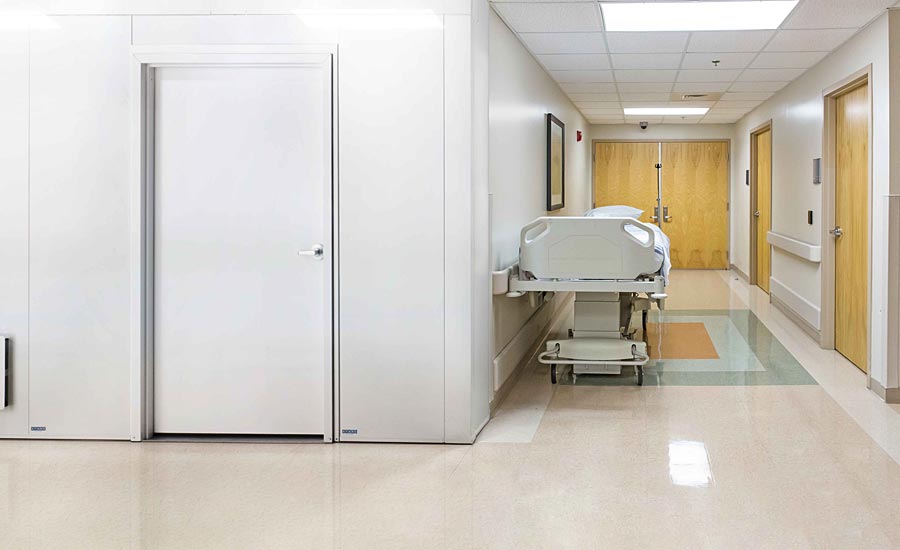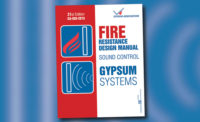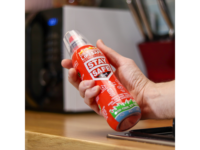Keeping occupants safe during occupied renovations is paramount, especially in sensitive environments. In healthcare renovations, for example, the need to protect patients, staff and workers from fire hazards poses a familiar challenge: the replacement of any penetrated separation walls with a temporary one-hour, or equivalently rated, separation wall.
While replacing a wall is simple enough, in healthcare settings the stakes are raised by the need to work quickly and economically in a way that’s non-disruptive to the facility and, of course, in compliance with relevant building standards.
Traditionally, contractors and facilities managers have been stymied by the fact that they’ve only had one solution to leverage for fire-rated separation during occupied renovations: drywall. But a growing trend toward modularity is sparking renewed interest in pre-engineered solutions for fire-rated temporary containment.
Leading From (Way) Behind
As the time-honored default, fire-rated drywall has enjoyed privileged standing as a familiar, inexpensive legacy solution known to comply with building standards. However, to build a temporary separation wall using drywall, builders must construct a metal stud drywall partition up to the ceiling or, in some cases, through the ceiling up to the deck above. It’s a laborious, dirty job that takes a long time to complete, and must meet code.
Two long-standing industry standards in particular—NFPA 101 and the International Building Code—dictate how construction must be done.
NFPA 101 spells out the minimum building design, construction, operation and maintenance requirements necessary to protect building occupants from fire, smoke and toxic fumes. It details—down to the type and placement of screws used—exactly how the wall should be built. Equally important, it indicates that the type of construction selected has been thoroughly tested and vetted according to national standards.

Rigorous Testing Requirements Leads to Industry Gap
One important national standard is ASTM E119, a testing standard for wall assemblies that describes the testing methodology required for a wall to qualify as meeting a one-, two-, three-, or four-hour fire-rated standard.
Another key testing standard is ASTM E84, the traditional fire protection standard specifying what kind of materials may be used in a facility. E84 addresses two factors for surface burning: the amount of flame generation or production, and the amount of smoke generation.
In addition, UL 10C describes the fire performance requirements for rated doors.
Replacing an existing separation wall with a reusable temporary separation wall, while remaining compliant with NFPA 101 and IBC, is what makes this seemingly simple task such a difficult situation for contractors and facilities managers. It also explains why drywall has endured as a temporary containment solution, despite its shortcomings.
Problems Are Not Solutions
Although fire-rated drywall may meet the necessary safety requirements for temporary containment, it’s still the most time- and labor-intensive solution to install and take down. And for clients requesting “a finished look and feel,” drywall also requires painting after installation, adding to the timeline and overall cost of the project.
Given that drywall also is not reusable and can be damaged easily on job sites, it’s easy to see why it’s not only a less flexible option for temporary containment but one that’s subject to rising labor and material costs as well.
Drywall’s limitations are driving contractors to take a closer look at pre-engineered solutions for occupied renovations.
Although early iterations of temporary containment used more problematic components to deliver modular designs, it’s worth noting that design capabilities in modular temporary containment have advanced significantly over the past three to five years.
Today’s leading solutions for healthcare settings are faster to set up and take down, ICRA-compliant, highly durable, aesthetically pleasing, reusable, environmentally sustainable, and now—for the first time—one-hour fire-rated.
Rising to the challenge
If something goes wrong during a healthcare renovation and the Joint Commission, State Inspector or Fire Marshall investigates, it falls on the facility manager to explain every detail. For this reason, STARC Systems relied heavily on feedback from facilities managers and contractors when developing FireblockWall, the industry’s first modular, reusable one-hour fire-rated temporary containment system.
FireblockWall is constructed from the floor to the deck above, employing perimeter tracks and specially designed panels that include pre-designed negative air panels, doors and supporting components. Other advantages include:
- Exceeding ASTM E119 and E84 requirements, as well as ICRA Class IV, a designation which states hospitals must, “construct barriers to prevent dust and dangerous pathogens from entering patient care areas and ensure that barriers are impermeable to fungal spores and in compliance with local fire codes.”
- Installation with only one inspection required.
- Fast installation requiring minimal labor. An easy four-step process enables two laborers to install a 10-feet by 15-feet corner room in 90 minutes—approximately four times faster than traditional drywall. It eliminates the need for taping, mudding, sanding, painting and clean-up.
- Superior noise-blocking. With an STC rating of 40, FireblockWall is 65 percent quieter than any other temporary containment system on the market.
- Negative air panel promotes easy air management, preventing dust from contaminating the area. If temperatures exceed 165 degrees, the damper automatically closes.
- Durable panels can be reused dozens of times.
- A lower carbon footprint, producing none of the debris and waste that accompanies drywall.
- Shortened project durations.
Following four years in research and development, the arrival of FireblockWall signals yet another way today’s modular temporary containment solutions are driving innovation, especially for occupied renovations.
Takeaway
The implementation of modular solutions for temporary containment is on the rise, a trend that is likely to escalate if inflation and supply chain issues carry forward, as many experts project.
For contractors it’s an exciting time because—despite the unique set of challenges they face heading into 2022—the availability of an industry-first, one-hour fire-rated solution means they finally have a viable option for dealing with the age-old issues associated with building drywall for temporary containment.
Fast, easy, flexible, durable, reusable and safe, modular solutions bring a whole new outlook to what’s possible with a pre-engineered solution. By removing the inspection cycles and all the requirements of on-site stick-built construction, contractors and facilities managers can now accelerate the installation and take-down of temporary containment, deducting weeks from their program schedules in the process.






Report Abusive Comment